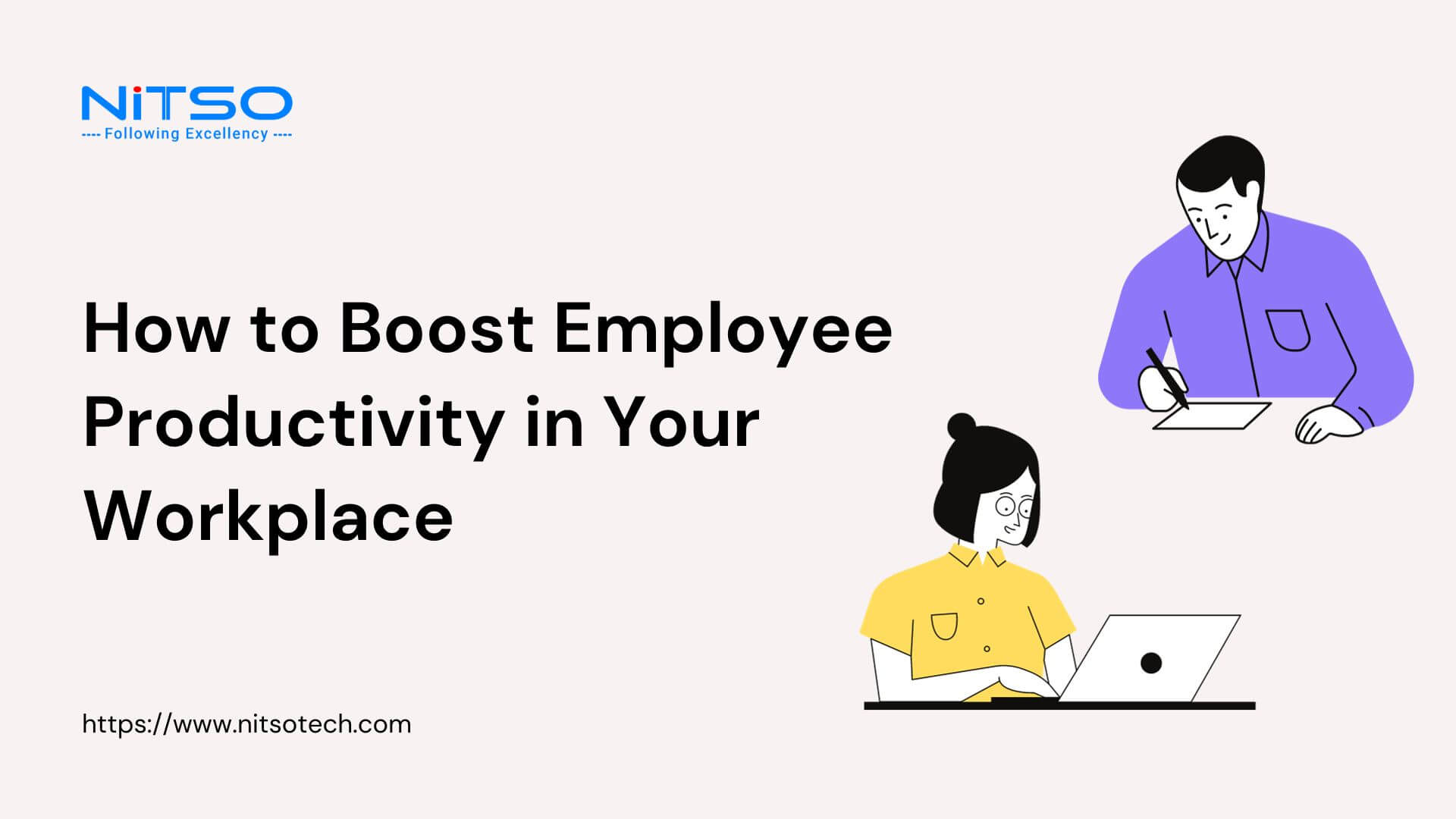In today’s competitive business world, employee productivity is a crucial factor that can make or break a company’s success.
Yet recent studies show that productivity growth has declined in India by nearly half over the past decade. This troubling trend signals that employers need to take a close look at what motivates and engages staff to perform at their peak potential.
The good news is that there are several strategies Indian companies can implement to boost employee productivity in actual ways. By addressing issues like distractions in the workplace, promoting well-being, utilizing technology, encouraging collaboration, offering flexibility, and recognizing achievements, organizations can cultivate a culture that brings out the best in employees. The payoff for this investment is immense: higher efficiency, innovation, and profits.
In this article, we will explore best practices to dramatically improve productivity among Indian knowledge workers. With a holistic approach, your firm can reverse declining performance and gain a competitive edge.
On This Page
Unlocking Success: Strategies to Boost Employee Productivity
1. Address Common Distractions
One of the biggest threats to employee productivity is constant distractions in the modern open office. With so many people crammed into shared spaces, noise and interruptions are unavoidable. Employees get derailed from complex tasks by loud conversations, colleagues stopping by to chat, and other disruptions. This context-switching severely disrupts focus and costs precious time and mental energy.
There are simple solutions Indian companies can implement to help workers minimize distractions. Providing noise-cancelling headphones allows employees to mute external sounds when they need to go into deep work mode. Designating certain areas or cubicles as “quiet zones” keeps the most noise-sensitive staff away from high-traffic corridors. Managers can coordinate with adjacent teams to keep volume levels low at certain times of day. And enforcing a “clean desk” policy clears physical clutter that can also prove distracting.
With some creative spatial design and ground rules, employers can dramatically reduce the amount of distractions bombarding staff daily. This enables longer periods of uninterrupted focus which is proven to boost productivity on cognitively demanding tasks requiring concentration.
2. Promote Physical Wellbeing to Boost Energy
The hellish commutes and long hours common at many Indian companies take a toll on employees’ physical health and energy levels. When workers are drained, they have a hard time concentrating and performing at their peak. By making employee well-being a priority, organizations can energize their workforce and see major gains in employee productivity.
Offering exercise breaks allows staff to recharge their minds and bodies during the workday. Providing ergonomic workstations and chairs tailored to each employee’s needs can alleviate back/neck pain that hampers focus. Stocking healthy snacks in the office keeps the energy high and workers fueled. Standing/walking meetings build in more movement.
Companies that encourage work-life balance with reasonable hours and paid time off give workers’ minds a chance to rest. Onsite gyms, yoga classes, and stress management workshops also demonstrate investment in holistic wellbeing.
When employees have the physical and mental energy they need, they have more motivation and ability to excel at their jobs. The energy saved from less stressful commutes can be poured back into higher-quality work.
3. Leverage Technology to Automate and Streamline
While India has a reputation as a tech hub, many local companies underutilize technology’s potential to dramatically boost operations and employee productivity. Manual, repetitive administrative tasks are huge time wasters that divert employees’ energy from core responsibilities. The right tools can automate these mundane processes and free up staff to do more strategic work.
Robust data management platforms, workflow automation software, and inventory/scheduling solutions can act like an extra pair of hands. Artificial intelligence takes over tiresome data entry and analysis. Collaboration apps facilitate seamless communication and document sharing.
The key is providing adequate training when new systems are implemented. Employees will only fully adopt tools they understand how to use. Ongoing tech support is also crucial, so minor hiccups don’t derail entire operations. Designating savvy staff as go-to troubleshooters encourages adoption.
With the right infrastructure, technology enables employees to cut out tedious tasks and focus mental resources on value-adding work. This streamlining is fundamental to boosting productivity across departments. Tech should make business processes smarter, not more complicated.
4. Encourage Collaboration and Idea Sharing
While Indian corporate culture has traditionally emphasized hierarchy and individual roles, today’s knowledge economy requires more collaboration and teamwork. When employees feel siloed and wary of speaking up, group brainstorming and problem-solving suffer. Fostering an open environment where employees work together boosts engagement, innovation, and productivity.
Simple changes can make a difference. Institute regular cross-departmental meetings to share ideas and give visibility into the challenges each team faces. Rotate staff into different groups for key projects to prevent insularity. Design workspaces that bring people together rather than isolating them.
Train managers to actively solicit input from employees at all levels. Make clear that collaboration is valued over unhealthy internal competition.
When employees feel psychologically safe to share concepts without fear of judgment, collective knowledge grows. The free flow of information and staff support for each other become competitive advantages.
5. Offer Flexibility in When and Where Work Happens
Rigid schedules with strict 9 to 5 office hours and short, timed lunch breaks may curb distractions. However, such a lack of flexibility can also hamper productivity for employees who work better under different conditions. Providing some autonomy over when and where work gets done can unlock higher performance.
Consider offering flexi-time schedules within reason, where employees can shift their hours earlier or later to align with personal chronotypes and energy levels. Occasional remote work days also appeal to staff with lengthy commutes or caretaking responsibilities.
The key is maintaining open communication and accountability. Employees should coordinate schedules with managers and teams to ensure necessary overlap. Productivity tracking helps remote workers stay on task away from direct supervision.
While full-time remote work does not suit every company, giving staff some control over their environment shows trust. This cultivates strong intrinsic motivation to do great work. Employees will return flexibility with increased effort and results.
The outdated command-and-control approach of micromanaging time and place is giving way to freedom as a productivity booster.
6. Recognize Achievements to Boost Morale
One of the most powerful yet underutilized motivators is frequent recognition of employees’ hard work and achievements. When dedication and great performance go unacknowledged, staff can feel demotivated. Publicly praising contributions is a simple way to uplift morale and productivity.
Managers should call out individuals who go above and beyond during team meetings. Acknowledging an employee’s work anniversary or milestone reinforces their value. Peer-to-peer recognition programs enable coworkers to shout out each other’s wins.
Monetary rewards like performance bonuses also provide concrete validation. Even small spot bonuses of Rs.1000 for meeting key targets can incentivize results. Company “hall of fame” sections on the intranet highlight top performers.
Recognition gives employees increased purpose and self-worth. Their skills and efforts directly contribute to business success. With boosted morale comes greater engagement, drive, and productivity gains. No one feels taken for granted when their contributions are regularly applauded. Check out our article on Strategies to Build an Engaged Workforce.
Conclusion
In today’s competitive world, all Indian companies must focus on unlocking higher productivity among their workforce. Declining performance negatively impacts the bottom line while demotivated employees stint innovation.
The good news is that with a holistic approach, organizations can cultivate an environment optimized for engagement, energy and efficiency. Addressing distractions, promoting well-being, leveraging technology, encouraging collaboration, offering flexibility and recognizing achievements all contribute to the goal of boosting productivity.
While increased investment is required upfront, the long-term payoff makes it worthwhile. Employees will reciprocate these efforts with higher performance, loyalty and discretionary effort. A productive workforce drives profits, customer satisfaction and overall competitive advantage.
The strategies outlined in this article only scratch the surface of what’s possible. But they provide a roadmap to start realizing the full potential of your human capital. With smart investments in your people, your company can achieve exponential gains in innovation, execution and the bottom line.
FAQs Related to Employee Productivity
What are the main causes of decreased productivity among Indian employees?
Common causes include distractions like noise, lack of collaboration, inadequate tools/tech, poor physical environments, and limited flexibility or recognition.
How can companies tell if their employees have a productivity problem?
Signs include missing deadlines, high error rates, low output, failure to meet targets, employee boredom/frustration, and increased costs or reduced profits.
Is it possible to improve productivity in traditional Indian corporate cultures?
Yes, even traditional hierarchies can benefit from tactics like encouraging collaboration, providing flexi-time, leveraging tech, and offering recognition programs.
What technology tools can help increase employee productivity?
Tools like automated workflows, collaboration software, inventory management systems, and AI can streamline repetitive tasks and boost efficiency.
How can you motivate employees to be more productive?
Motivation comes from rewarding achievements, providing growth opportunities, fostering engagement through collaboration, and cultivating wellness and work-life balance.
Should managers crack down on distractions to boost productivity?
Some policing of distractions is good, but excessive control and micromanaging actually hamper intrinsic motivation that fuels productivity.
How soon can you expect to see results after implementing productivity initiatives?
While some changes have an immediate impact, allow a few months for employees to fully adapt. Continually track progress and fine-tune strategies.
What is the best way to get employee buy-in on productivity programs?
Involve staff in brainstorming solutions, provide extensive communication/training, and share how productivity gains will mutually benefit employees and the company.








0 Comments